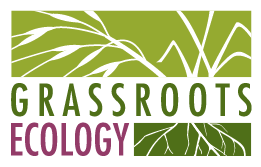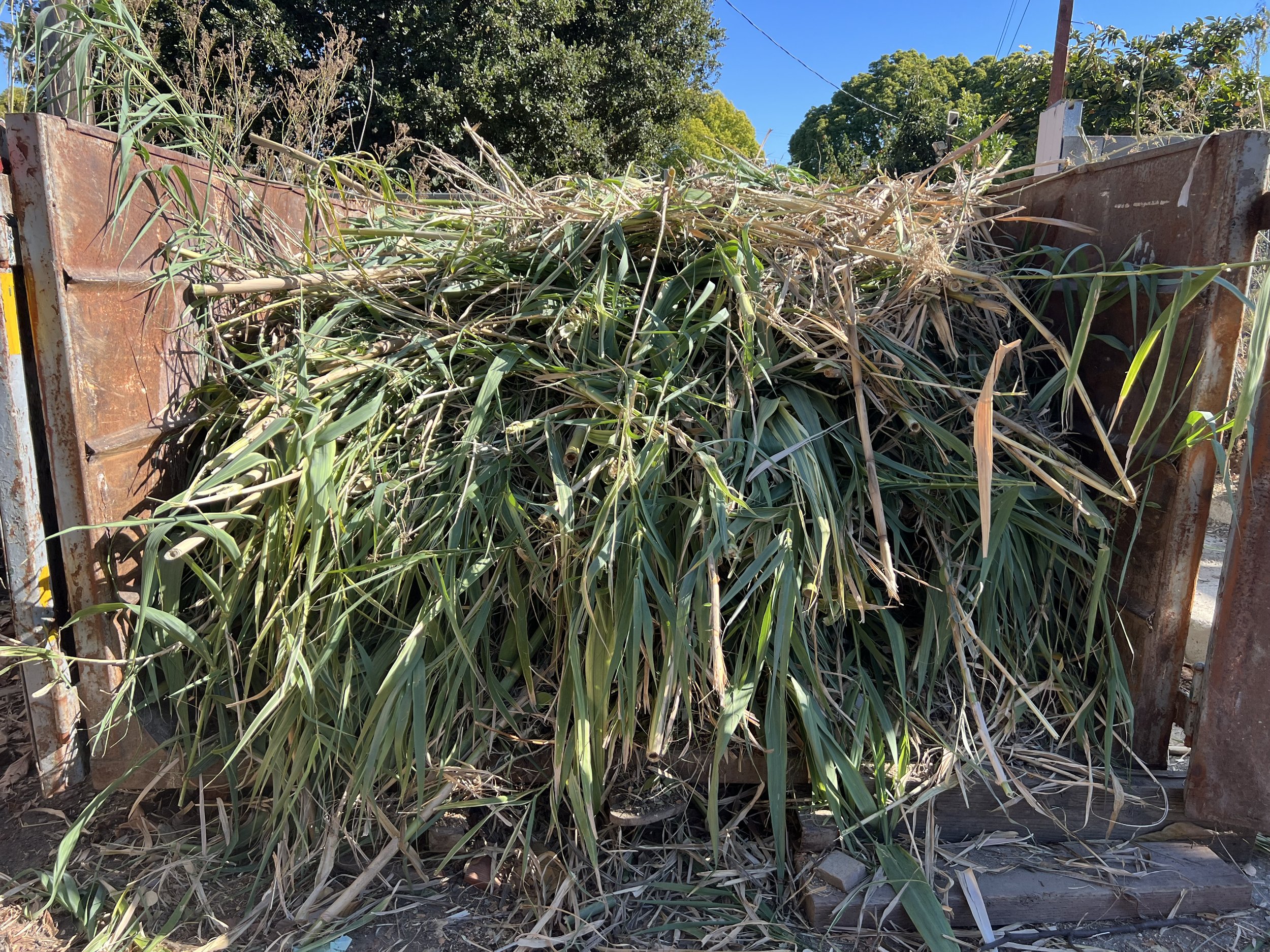From Hazard to Habitat: Making the Most of One Campus’ Creek
Redwood High is an alternative school in Redwood City with a unique natural feature: a creek that flows right through its campus. However, for years the creek hasn’t been providing much for the school or the ecosystem. A big part of the problem was the eucalyptus trees lining the top of the creek bank. These fast-growing and highly flammable trees were constantly dropping limbs and debris—increasing fire risk and clogging the creek.
The eucalyptus wasn’t helping wildlife either. While eucalyptus trees are vital for koalas and other species in their native habitat of Australia, here in California, they provide far less support for local ecosystems compared to our native trees. California native oaks benefit hundreds if not thousands of native species including mammals, birds, invertebrates, fungi, and lichens.
Last year, responding to concerns voiced by the Redwood High School community, Grassroots Ecology set out to help Redwood High with its eucalyptus problem, one of the objectives of our multi-site/multi-year Redwood City Urban Creek Regreening Project funded by the US EPA San Francisco Bay Water Quality Improvement Fund. Beyond the tree removals, school administrators and teachers were enthusiastic about using creek restoration to connect students with nature and augment their learning experiences.
Eucalyptus between the school chicken coop and creek.
Before diving into the work of rebuilding the habitat together, we had some pretty serious demolition work to do. Many of you have stood with us in the past to clear starthistle or French broom or any number of noxious invasive plants. This time, the plant we were targeting was a towering tree—not just one, but a dozen of them. As if these giants weren’t enough, there were over 20 smaller eucalyptus trees that had resprouted from previously cut stumps and 26 invasive acacia trees also standing in the way of healthy habitat.
This was too big of a job for our usual groups of volunteers with shovels, mattocks, or weed wrenches. It took paid work crews equipped with chainsaws and a crane, along with three overseeing biologists. But after six weeks of work (primarily during the weekend to minimize disruption to students), it finally all came crashing down—in a good way.
Ridding Redwood High School of its troublesome eucalyptus trees was a tall task.
Volunteers with City Trees plant beneficial native trees where eucalyptus once dominated.
Next, we teamed up with our partner City Trees—a volunteer urban forestry nonprofit serving Redwood City—to install a diversity of native trees in place of the eucalyptus, including coast live oak, valley oak, box elder, big leaf maple, black walnut, and elderberry. Though oaks in particular are slower to grow than eucalyptus, these trees are worth the wait as they provide far greater benefits to wildlife and the ecosystem. Students from nearby Woodside High’s Green Academy joined to help with the tree planting.
Even more students got to take on a hands-on role when we held our first creek restoration sessions in December. Around 50 students from three Redwood High Environmental Science classes joined our staff at the creek right outside their classroom to learn firsthand about biodiversity and how invasive and native plants impact the local ecosystem.
Then they got to do something about it—right then and there—by working together to remove a stand of Arundo donax, commonly known as Giant Reed, a highly invasive bamboo-like plant that can be damaging to California's riparian ecosystems. Unlike the removal of massive eucalyptus, the Arundo was a challenge that students could take into their own hands. After back-to-back 50-minute sessions with three classes, a large chunk of the Giant Reed population had become a giant mound of green waste.
Giant Reed removed by RHS students.
Now comes the best part. Starting this winter, we will be digging in together to replant hundreds of native plants grown at Grassroots Ecology’s Native Plant Nursery—blue elderberry, coffeeberry, common yarrow, and California fuschia, to name a few—great companions for the newly planted native trees.
Though much has been accomplished over the past few months, this multi-year project is just getting off the ground. We look forward to working with Redwood High School students over the next three school years to install and maintain native plants along their school creek while introducing them to the fundamentals of ecology and project planning.
We also have hopes of raising additional funds to operate a small nursery utilizing space in a new greenhouse being built by the shop class on-site. That would give students opportunities to participate in the full spectrum of habitat restoration, from plant propagation to planting to maintenance. Students from other Sequoia Union High School District (SUHSD) campuses will also be invited to join in the fun through weekend volunteer events—including Sequoia, Menlo-Atherton and Woodside High Schools, all of which have close ties to Redwood High School. By the time we’re done, this stretch of creek will be transformed into a vibrant stretch of creek that supports wildlife and student learning.
If you’re interested in getting involved at Redwood High or our other Redwood City Creek Regreening Project sites, we would love to have you join! Next to launch will be new restoration sites at the Redwood Creek Trail near downtown and at the San Mateo County Navigation Center—working together with our wonderful outreach partner, Nuestra Casa. Check out our new webpage and look out for upcoming community workdays in our Events Calendar. The more volunteers who sign on, the more we’ll get done and the more fun we’ll have!
By Laurel Wee, Project Manager







